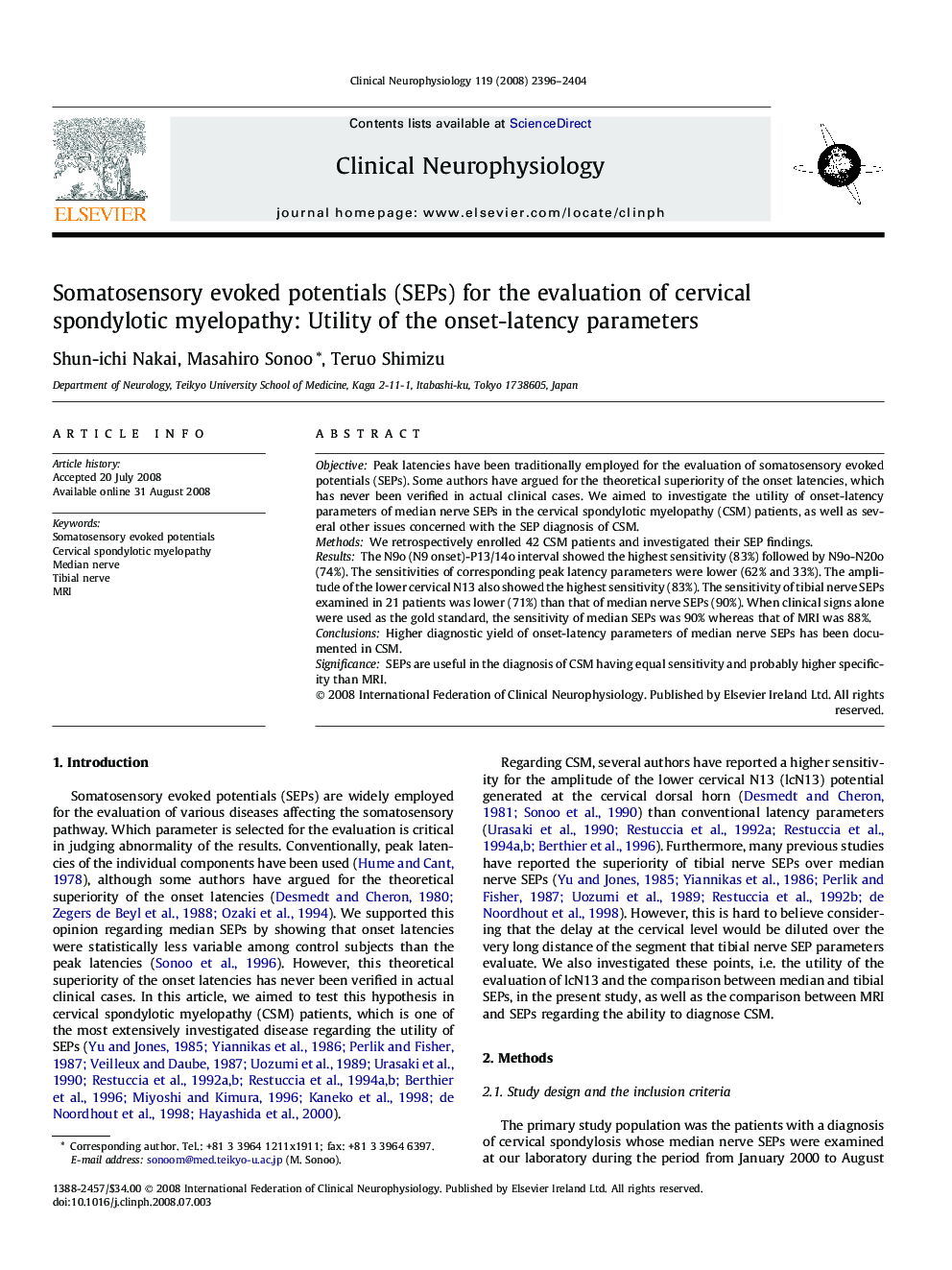| کد مقاله | کد نشریه | سال انتشار | مقاله انگلیسی | نسخه تمام متن |
|---|---|---|---|---|
| 3046477 | 1185042 | 2008 | 9 صفحه PDF | دانلود رایگان |

ObjectivePeak latencies have been traditionally employed for the evaluation of somatosensory evoked potentials (SEPs). Some authors have argued for the theoretical superiority of the onset latencies, which has never been verified in actual clinical cases. We aimed to investigate the utility of onset-latency parameters of median nerve SEPs in the cervical spondylotic myelopathy (CSM) patients, as well as several other issues concerned with the SEP diagnosis of CSM.MethodsWe retrospectively enrolled 42 CSM patients and investigated their SEP findings.ResultsThe N9o (N9 onset)-P13/14o interval showed the highest sensitivity (83%) followed by N9o-N20o (74%). The sensitivities of corresponding peak latency parameters were lower (62% and 33%). The amplitude of the lower cervical N13 also showed the highest sensitivity (83%). The sensitivity of tibial nerve SEPs examined in 21 patients was lower (71%) than that of median nerve SEPs (90%). When clinical signs alone were used as the gold standard, the sensitivity of median SEPs was 90% whereas that of MRI was 88%.ConclusionsHigher diagnostic yield of onset-latency parameters of median nerve SEPs has been documented in CSM.SignificanceSEPs are useful in the diagnosis of CSM having equal sensitivity and probably higher specificity than MRI.
Journal: Clinical Neurophysiology - Volume 119, Issue 10, October 2008, Pages 2396–2404